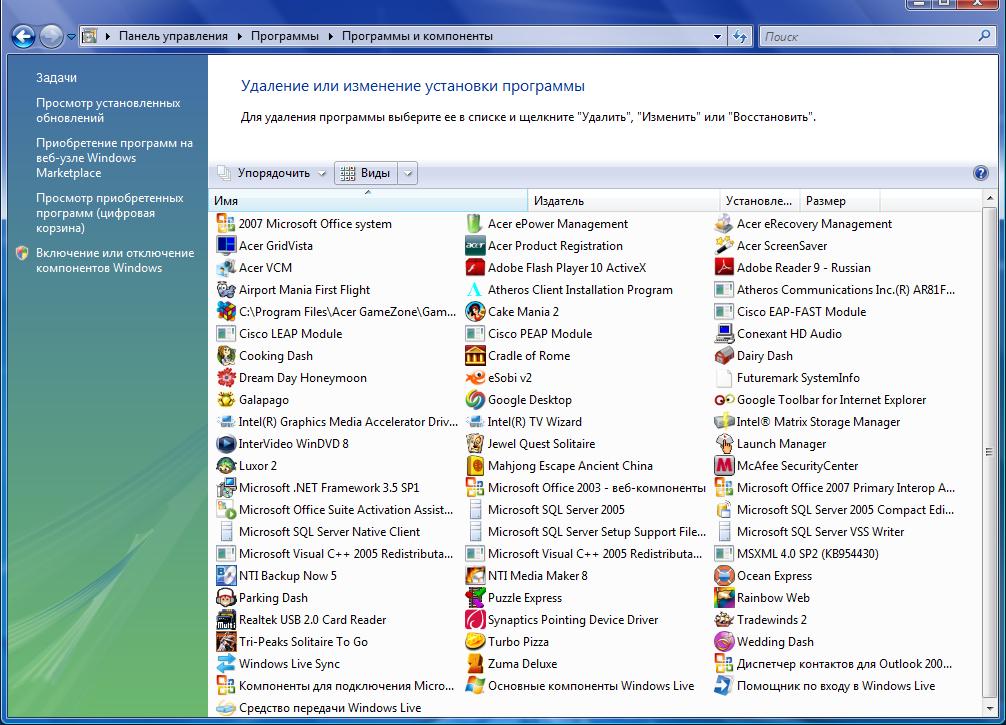This document describes how to configure the Cisco Secure Services Client (CSSC) with the Wireless LAN controllers, Microsoft Windows 2000? Software, and Cisco Secure Access Control Server (ACS) 4.0 through EAP-FAST. Cisco EAP-FAST Module, free download. Cisco Systems, Inc.: Communications.
Hi Calvin,
1.Have you ever connected to a domain network?
2.Have you used CISCO products earlier?
3.Were there any recent changes made on the computer prior to the issue?
Cisco EAP-FAST Module is an Authentication via Secure Tunneling (EAP-FAST), an EAP type from Cisco Systems. Extensible Authentication Protocol-Flexible Authentication via Secure Tunneling (EAP-FAST) is a publicly accessible IEEE 802.1X EAP type developed by Cisco Systems. EAP-FAST provides protection from a variety of network attacks.If you haven’t used any CISCO products and not connected to a domain network, you may go ahead and delete them.

Please follow these steps to delete these programs:
1.Press Windows Key + W, type uninstall a program.
Cisco Eap Fast Module Download Windows 8
2.Tap or click Uninstall a program.
3.Find the programs Cisco EAP-FAST Module, Cisco LEAP Module, and Cisco PEAP Module.
4.Right click on each program and click on Uninstall.
5.Restart the computer and check if they have completely removed.
To ensure your computer is free from virus and spyware, you may run an online scan.
http://www.microsoft.com/security/scanner/en-us/default.aspx
Note: Any data files that are infected may only be cleaned by deleting the file entirely, which means there is a potential for data loss.
Hope this information helps. If you have any concerns, please let us know.-->Find out how to enable support for PEAP, EAP-FAST, or Cisco LEAP protocols on your Surface device.
If you use PEAP, EAP-FAST, or Cisco LEAP in your enterprise network, you probably already know that these three wireless authentication protocols are not supported by Surface devices out of the box. Some users may discover this when they attempt to connect to your wireless network; others may discover it when they are unable to gain access to resources inside the network, like file shares and internal sites. For more information, see Extensible Authentication Protocol.

You can add support for each protocol by executing a small MSI package from a USB stick or from a file share. For organizations that want to enable EAP support on their Surface devices, the MSI package format supports deployment with many management and deployment tools, like the Microsoft Deployment Toolkit (MDT) and System Center Configuration Manager.
Download PEAP, EAP-FAST, or Cisco LEAP installation files
You can download the MSI installation files for PEAP, EAP-FAST, or Cisco LEAP in a single zip archive file from the Microsoft Download Center. To download this file, go to the Surface Tools for IT page on the Microsoft Download Center, click Download, and then select the Cisco EAP-Supplicant Installer.zip file.
Deploy PEAP, EAP-FAST, or Cisco LEAP with MDT
If you are already performing a Windows deployment to Surface devices in your organization, it is quick and easy to add the installation files for each protocol to your deployment share and configure automatic installation during deployment. You can even configure a task sequence that updates previously deployed Surface devices to provide support for these protocols using the same process.
To enable support for PEAP, EAP-FAST, or Cisco LEAP on newly deployed Surface devices, follow these steps:
Download and extract the installation files for each protocol to separate folders in an easily accessible location.
Open the MDT Deployment Workbench and expand your deployment share to the Applications folder.
Select New Application from the Action pane.
Choose Application with source files to copy the MSI files into the Deployment Share.
Select the folder you created in step 1 for the desired protocol.
Name the folder in the deployment share where the installation files will be stored.
Specify the command line to deploy the application:
For PEAP use EAP-PEAP.msi /qn /norestart.
For LEAP use EAP-LEAP.msi /qn /norestart.
For EAP-FAST use EAP-FAST.msi /qn /norestart.
Use the default options to complete the New Application Wizard.
Repeat steps 3 through 8 for each desired protocol.
After you’ve performed these steps to import the three MSI packages as applications into MDT, they will be available for selection in the Applications page of the Windows Deployment Wizard. Although in some simple deployment scenarios it might be sufficient to have technicians select each package at the time of deployment, it is not recommended. This practice introduces the possibility that a technician could attempt to apply these packages to computers other than Surface devices, or that a Surface device could be deployed without EAP support due to human error.
To hide these applications from the Install Applications page, select the Hide this application in the Deployment Wizard checkbox in the properties of each application. After the applications are hidden, they will not be displayed as optional applications during deployment. To deploy them in your Surface deployment task sequence, they must be explicitly defined for installation through a separate step in the task sequence.
To specify the protocol(s) explicitly, follow these steps:
Open your Surface deployment task sequence properties from the MDT Deployment Workbench.
On the Task Sequence tab, select the Install Applications step under State Restore. This is typically found between the pre-application and post-application Windows Update steps.
Use the Add button to create a new Install Application step from the General category.
Select Install a single application in the step Properties tab.
Select the desired EAP protocol from the list.
Repeat steps 2 through 5 for each desired protocol.
Install Cisco Eap Fast Module
Deploy PEAP, EAP-FAST, or Cisco LEAP with Configuration Manager
For organizations that manage Surface devices with Configuration Manager, it is even easier to deploy PEAP, EAP-FAST, or Cisco LEAP support to Surface devices. Simply import each MSI file as an application from the Software Library and configure a deployment to your Surface device collection.

For more information on how to deploy applications with Configuration Manager see How to Create Applications in Configuration Manager and How to Deploy Applications in Configuration Manager.
댓글